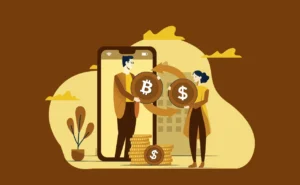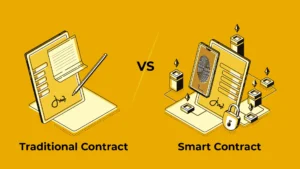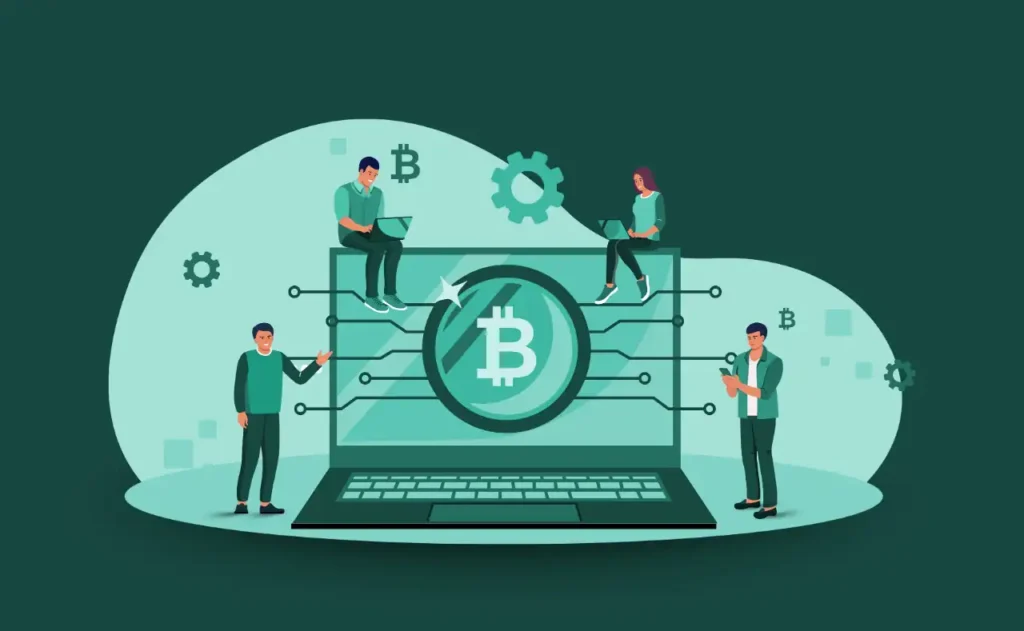
Over the past few years, words like Bitcoin, Ethereum, and Crypto Tokens have become very popular. You might have heard about people investing in cryptocurrency or companies launching their own digital coins. But what exactly are these coins and tokens? And how are they made?
Even if you are completely new to this topic, this blog will help you understand the basics of cryptocurrencies, how they work, and how new digital assets are created. According to Forbes, the cryptocurrency market cap has crossed $3 trillion and continues to rise every year. This shows that people around the world are increasingly investing in crypto over time.
So, before we dive deeper into tokens and the crypto ecosystem, it’s important to understand what cryptocurrency actually means.
What is Cryptocurrency?
Cryptocurrencies are digital assets that function as a form of online currency, enabling people to send and receive value over the internet. They are not controlled by any government or private authority. Unlike cash, cryptocurrencies cannot be printed or physically held, but they operate through a transparent digital system that shows how cryptocurrency works in real time.
The value of a cryptocurrency is determined entirely by the market. In simple terms, its price depends on how much people are willing to pay for it. Cryptocurrencies run on a technology called blockchain, which keeps the system transparent and secure. Because of this, no single person or company can control, shut down, or change its rules on their own.
According to Statista, the global cryptocurrency market is set to hit US$85.7 billion in 2025 with 962.9M users by 2026. The U.S. leads in adoption and revenue, showing strong future growth despite regulations, marking a promising future for digital assets.
What Are Coins and Tokens?
Coins and tokens are both types of digital assets that exist on blockchains. They might seem similar, but they are different in how they are created and used.
Let’s understand both parts with an example:
What Does Crypto Coin Mean?
A coin is a type of digital money that runs on its own blockchain. You can think of it like creating a new country with its own currency. Coins are mainly used to send and receive money, store value, or pay for services.
They also help keep the network safe by rewarding people who maintain it. Creating a coin is more difficult because it requires building a full blockchain system from the ground up.
Let’s start with a few well-known coins:
- Bitcoin (BTC): Runs on the Bitcoin blockchain, used mainly for payments and savings.
- Ether (ETH): Runs on the Ethereum blockchain and powers decentralized applications (DApps).
What is Crypto Token?
A token is a digital asset that uses someone else’s blockchain to work. It’s like building a house on another person’s land. Tokens are very flexible, they can be used for sending money, accessing apps, voting in communities, or representing real things like property.
They are easier to create and perfect for people who want to start a new idea or project without building a new blockchain.
Let’s look at some familiar tokens:
- Shiba Inu (SHIB): Built on Ethereum, part of a growing ecosystem with NFTs and games.
- PancakeSwap (CAKE): Runs on Binance Smart Chain, used for earning DeFi rewards.
Differences Between Coins and Tokens
To make it easier to understand, here’s a quick comparison:
| Feature | Coins | Tokens |
|---|---|---|
| Blockchain | Own separate blockchain | Built on existing blockchain |
| Examples | Bitcoin (BTC), Ether (ETH) | Shiba Inu (SHIB), Uniswap (UNI) |
| Main Use | Digital cash for payments | Versatile: money, access, voting |
| Creation Difficulty | Hard (build new blockchain) | Easy (use existing blockchain) |
| Consensus Mechanism | PoW/PoS required | Inherited from host chain |
| Independence | Fully independent network | Dependent on parent blockchain |
| Upgrade Process | Requires hard/soft forks | Smart contract upgrades |
Bitcoin surges to $1.52T market cap amid ETF inflows, while ERC-20/BEP-20 tokens capture ~62% of the $2.6T global total, per CoinMarketCap and CoinGecko trackers.
In short
Coins run on their own blockchains and act like digital cash, while tokens live on existing blockchains and can do much more, like voting, rewards, or representing assets. Tokens are easier to create, coins are more foundational.
Why Do People Create Coins or Tokens?
There are many reasons why people create coins or tokens.
- Build a New Digital Economy: Coins like Bitcoin let people trade directly without banks, offering more control over money.
- Power Decentralized Apps (DApps): Tokens are used inside apps for rewards, transactions, or voting. For example, Uniswap (UNI) allows users to vote on changes.
- Raise Funds: Projects sell tokens through ICOs or IDOs to raise money for development.
- Governance and Voting: Tokens give holders a say in project decisions, similar to shareholders in a company.
- Represent Real-World Assets: Tokens can represent property, art, or stocks, making digital ownership and trading easier.
How Are Coins and Tokens Created?
Creating a coin or token is a step-by-step process that involves planning, technical work, and safety checks. Let’s go through each step in full detail, like a simple roadmap.
Step 1: Define Your Purpose
First, you need to decide why you are creating the coin or token. This is your North Star – without it, your project might fizzle out.
Ask yourself:
- What problem will it solve?
- Who will use it?
- How will people use it?
Having a clear purpose helps guide the rest of the process. Write it down in a one-page manifesto. Pro tip: Study successful projects like Uniswap – their purpose (fair swaps) shines through. If you’re stuck, brainstorm with friends or join Reddit’s r/cryptocurrency for ideas.
Step 2: Choose the Right Blockchain
If you are creating a coin, you need to build your own blockchain from scratch. Understanding the right blockchain platform for token creation helps ensure proper structure and scalability.
If you are creating a token, you can use an existing blockchain, such as:
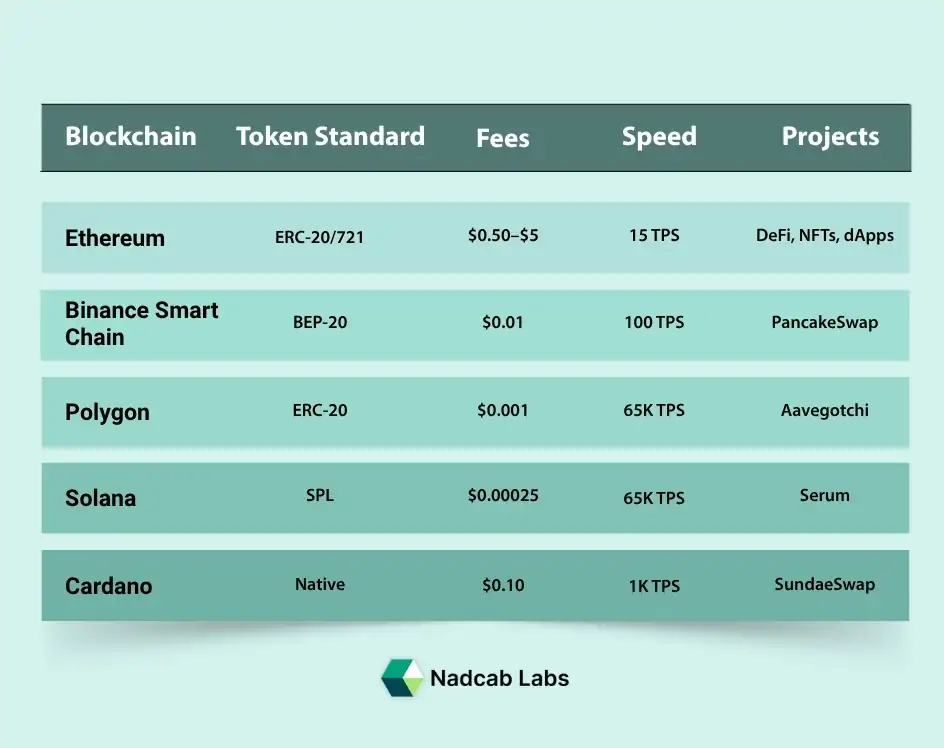 Ethereum is the most popular and trusted platform for token creation, offering strong security and vast developer support. However, newer blockchains like Polygon, Solana, and BNB Chain provide faster speeds and much lower fees.
Ethereum is the most popular and trusted platform for token creation, offering strong security and vast developer support. However, newer blockchains like Polygon, Solana, and BNB Chain provide faster speeds and much lower fees.
Step 3: Design the Coin or Token
Now it’s time to plan how your coin or token will work. This is the fun, creative part – sketch it out like designing a new app.
For tokens, decide:
- Total supply: How many tokens will be created? Fixed (like Bitcoin’s 21 million) or unlimited?
- Distribution: Who will get the tokens and how? (Airdrops to early users? Vesting for team?)
- Utility: What can users do with the token? (Stake for rewards? Burn for perks?)
- Name and symbol: What will it be called (for example, BTC or ETH)? Make it catchy!
- Decimals: How small a unit can be traded? (18 decimals mean tiny fractions, like 0.000000000000000001 tokens).
For coins, you also need to choose a consensus mechanism. This is how transactions are verified on the blockchain – the “voting” system for truth.
Some popular types are:
- Proof of Work (PoW): Used by Bitcoin. Computers solve puzzles to add blocks – secure but energy-heavy, like a gym workout for machines.
- Proof of Stake (PoS): Used by Ethereum (post-2022 Merge) and Cardano. Validators “stake” coins as collateral – greener and faster, like putting skin in the game.
Step 4: Create the Smart Contract (for Tokens)
Tokens are created using smart contracts. A smart contract is a program that runs automatically on the blockchain when certain conditions are met, with no human intervention needed. It’s like a vending machine: insert money (meet the condition), get soda (execute the action).
It controls how the token behaves, such as:
- Transferring tokens between users (with checks for approvals).
- Creating or destroying tokens (minting/burning for supply control).
- Checking balances (query how many you hold).
- Applying fees or rewards (e.g., 1% tax on trades for charity).
For example, a simple smart contract in Ethereum might look like this (written in Solidity, the go-to language):
// SPDX-License-Identifier: MIT
pragma solidity ^0.8.20;
import "@openzeppelin/contracts/token/ERC20/ERC20.sol";
contract MyToken is ERC20 {
constructor(uint256 initialSupply) ERC20("MyToken", "MTK") {
_mint(msg.sender, initialSupply);
}
}
This code moves tokens from one account to another, but with safety nets. Don’t worry if it looks Greek – free courses on CryptoZombies teach this gamified. Deploy it using tools like Hardhat or Truffle for local testing.
Step 5: Test and Audit
Before you officially launch your coin or token, it must be tested carefully. Skipping this step is like driving a car without brakes, disaster waiting to happen.
Developers use a testnet, which is a testing version of the blockchain (for example, Ethereum’s Sepolia). Here, you can simulate everything with fake money and find bugs, such as “What if someone sends negative tokens?” These issues are fixed iteratively. Tools like Ganache allow you to run a private testnet on your laptop.
After testing, the project should go through a security audit. Independent experts, such as firms like PeckShield or Quantstamp, review your code line by line for vulnerabilities, including reentrancy attacks where hackers can drain funds mid-transaction. This can cost between $5,000 and $50,000, but it’s worth every penny.
Step 6: Launch the Coin or Token
Once everything is ready and secure, the coin or token can be launched on the mainnet (the live blockchain network). This is launch day, exciting but nerve-wracking!
Use wallets like MetaMask to deploy: connect, pay gas fees, and boom, it’s live. After launch:
- Users can buy, sell, or trade it on DEXs like Uniswap.
- It can be listed on centralized exchanges (CEXs) like Binance after review.
- It can be integrated into apps, games, or projects – e.g., your token as in-game currency.
Some creators also run small promotional activities, like AMAs on Twitter or airdrops, to introduce their coin or token to the public. Track metrics with Etherscan for transparency. Celebrate, but monitor for issues.
How Much Does It Cost to Create a Crypto Token?
Creating a crypto token is affordable with no-code tools and cheaper blockchains. Costs depend on your choices like blockchain type, DIY or professional help, and security features. Simple tokens cost around $500 to $5,000, while advanced ones with audits and marketing range from $10,000 to $30,000. Start small and expand safely.
Here’s an easy cost breakdown:
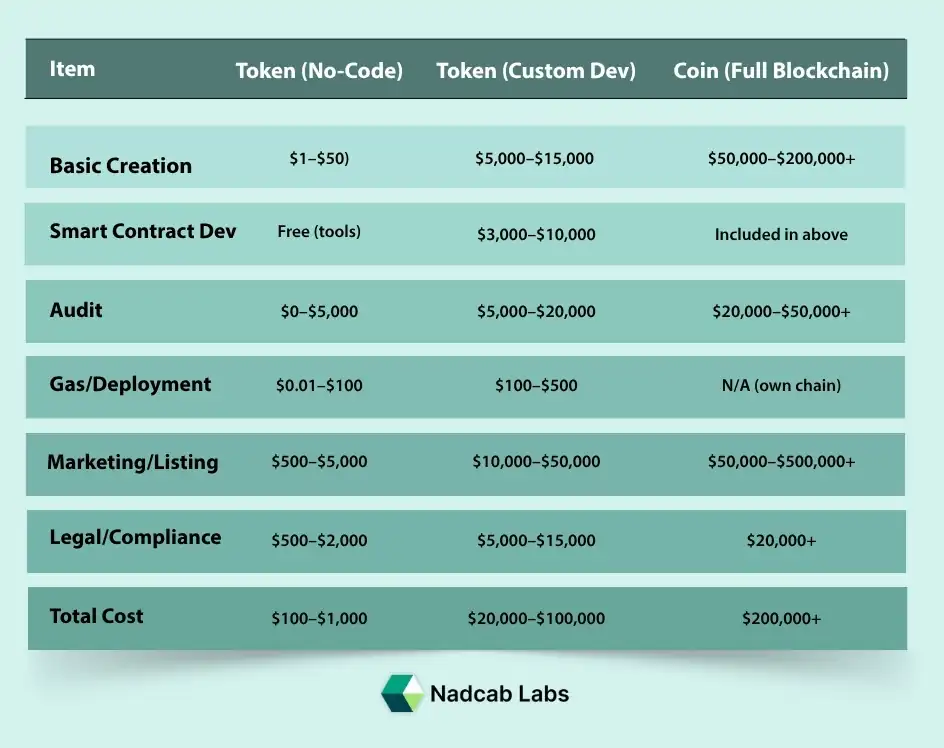
If you hire a token development company or agency, get ready to pay $10,000 to $100,000+ for full service. This includes coding, safety audit, design, website, launch support, and legal help.
What Happens After Launch?
Launching a token or coin is just the beginning. The real work starts afterward, think of it as parenting a newborn project. It needs constant care to thrive.
Developers usually continue improving the project by:
- Fixing bugs or updating the code: Regular patches, like software updates on your phone. Use GitHub for version control.
- Adding new features or use cases: Start simple, then expand – e.g., add staking rewards later.
- Engaging with the community: Discord chats, Twitter spaces, or Telegram groups. Listen to feedback; it’s gold.
- Making sure the system remains secure and transparent: Ongoing audits and open-source code.
Projects that stay active and listen to their users tend to grow faster and become more trusted. Look at Chainlink, which started small and now powers trillions of dollars in DeFi. Burnout is real, so build a team early.
Launch Your Crypto Token with Confidence
Create secure, scalable crypto tokens with Nadcab Labs. From tokenomics to launch, we make bringing your digital currency to life easy.
Key Points to Remember
If you are new to all this, here are the main things you should take away, expanded for clarity:
- A coin works on its own blockchain – independent but hard to build.
- A token runs on top of another blockchain, easy entry for users.
- Coins are like creating a new system (bank), tokens like an app inside (ATM).
- Tokens can be used for payments, voting, rewards, or representing real assets like property.
- Smart contracts control how tokens behave – learn Solidity basics.
- Testing and auditing are essential before launch – skip = disaster.
- Continuous updates and community involvement help the project grow – talk daily!
- Bonus: Start on testnet – zero risk.
- Tools: Remix, thirdweb, Polygon faucet.
The Future of Coin and Token Development
The crypto industry is growing quickly, and new ideas keep coming up. In 2025 alone, 50,000+ new tokens launched! Coins and tokens will become even more important in everyday life. Let’s explore trends with details:
- Web3 Applications: Users control their data. Example: Decentralized Twitter (Farcaster) uses tokens for tips.
- Tokenized Assets: Property, cars, art owned digitally. By 2030, $10T market! Buy Tesla shares as tokens.
- Decentralized Organizations (DAOs): Communities run companies. 5,000+ DAOs in 2025, managing $20B.
- Cross-Chain Tokens: Move between Ethereum/Solana easily via bridges like Wormhole.
- AI-Integrated Tokens: Tokens that auto-trade with AI. New in 2025!
- Green Crypto: PoS coins only – zero carbon.
Conclusion
Creating a crypto coin or token may seem difficult at first, but with the right planning and knowledge, it is possible for anyone. Whether you create a coin with its own blockchain or a token on networks like Ethereum or BNB Chain, every step from planning to launch is important. Success depends on regular updates, community support, and strong security. As the crypto world continues to grow, your project could become a part of that future. Start small, keep learning, and focus on building real value.
Frequently Asked Question - Crypto Token
How much does it cost to create a crypto token?
The cost to make a crypto token depends on your goals. If you use free tools, it may cost around $50. For a professional token with audits and full setup, prices usually range between $5,000 and $20,000.
What is the difference between coin and token?
A coin runs on its own blockchain, like Bitcoin or Ethereum. A token is built on an existing blockchain. Coins mainly work as digital money, while tokens can be used for payments, rewards, or project governance.
What is cryptocurrency and how does it work?
Cryptocurrency is digital money that works on blockchain technology. It allows people to send and receive funds directly without a bank. Every transaction is recorded publicly, making it transparent, secure, and fast for global payments.
Which blockchain is best for token creation?
Ethereum is the most popular for tokens, but Binance Smart Chain and Polygon are cheaper and faster options. The best choice depends on your project’s goals, cost limits, and the audience you want to reach.
How long does it take to create a token?
A simple token can be made within a few hours using templates. But for professional tokens with smart contracts, audits, and testing, the full process can take two to four weeks on average.


